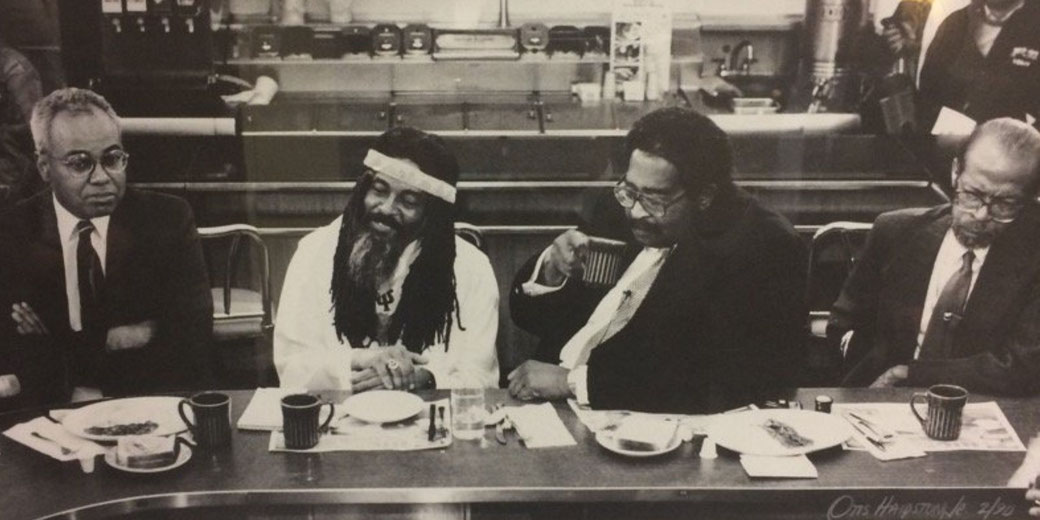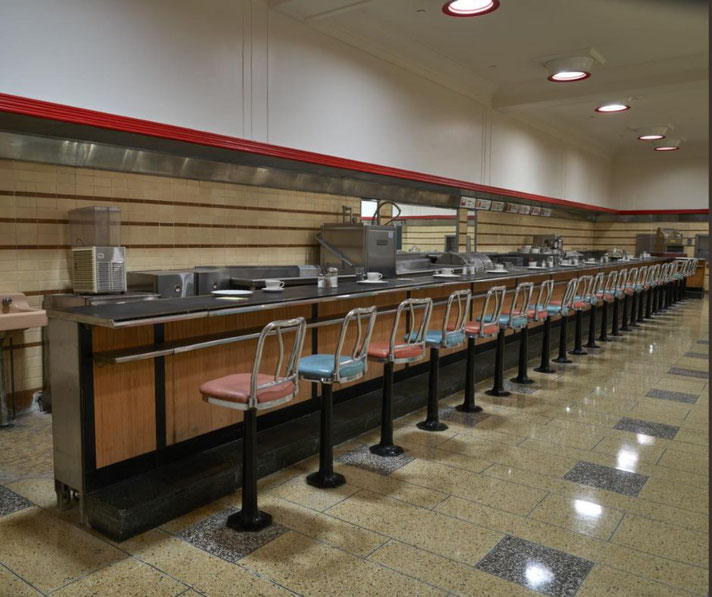The role of the Greensboro sit-ins during the fight for civil rights

On February 1, 1960, four young African American students from North Carolina Agricultural and Technical State University took seats at a "whites-only" lunch counter at a Woolworth's store in Greensboro, North Carolina.
Their simple yet profound act of civil disobedience ignited a spark that would help fuel the Civil Rights Movement, challenging the deeply entrenched system of segregation in the American South.
This act was a watershed moment that galvanized young activists across the nation.
The racial tensions in mid-20th century America
The United States in the late 1950s was a nation deeply divided along racial lines, particularly in the South, where Jim Crow laws enforced a system of racial segregation that permeated every aspect of daily life.
These laws, named after a 19th-century minstrel show character, were designed to maintain a social order that subjugated African Americans and upheld white supremacy.
Public facilities, schools, and even businesses like restaurants and stores were segregated, often under the guise of "separate but equal," a doctrine that had been upheld by the U.S. Supreme Court in the 1896 case Plessy v. Ferguson.
In this environment, the concept of civil disobedience emerged as a powerful tool for challenging unjust laws.
Inspired by the teachings of Mahatma Gandhi and further developed by leaders like Martin Luther King Jr., civil disobedience involved deliberately breaking laws considered to be unjust but doing so in a nonviolent manner.
The aim was to draw attention to the immorality of these laws and to provoke change through public opinion and legislative action.
This form of peaceful protest was a cornerstone of the Civil Rights Movement, a social and political campaign aimed at ending racial segregation and discrimination against African Americans.
By 1960, the Civil Rights Movement had already achieved some significant milestones, such as the 1954 Brown v. Board of Education decision that declared state laws establishing separate public schools for black and white students to be unconstitutional.
However, desegregation was slow to take effect, especially in the Deep South, where resistance to change was most fierce.
Activists were searching for new ways to catalyze social transformation, and it was in this climate that the Greensboro sit-ins occurred.
The sit-in as a form of protest was not entirely new; it had been used by organizations like the Congress of Racial Equality (CORE) in the years leading up to 1960.
The Greensboro Four: Catalysts for change
The linchpins of the Greensboro sit-ins were four young men—Ezell Blair Jr., David Richmond, Franklin McCain, and Joseph McNeil—commonly referred to as the Greensboro Four.
These students from North Carolina Agricultural and Technical State University were united by a shared sense of purpose and a deep commitment to social justice.
Inspired by the teachings of civil rights leaders like Martin Luther King Jr., as well as the broader ethos of the Civil Rights Movement, they decided to take direct action against the racial segregation that was a daily reality in the American South.
What happened on the first day of the sit-ins?
On February 1, 1960, the four students walked into the Woolworth's store in Greensboro, North Carolina, with a mission.
Their plan was straightforward but fraught with risk: to sit at the "whites-only" lunch counter and request service, thereby challenging the deeply ingrained racial segregation policies of the American South.
After purchasing a few small items like toothpaste and school supplies to establish themselves as paying customers, they took their seats at the lunch counter and asked for coffee.
The reaction was immediate. The store manager, Clarence Harris, informed them that they would not be served at the counter designated for white patrons.
Despite the refusal and the mounting tension, the young men remained seated, silently asserting their right to equal treatment.
They were neither loud nor confrontational; their protest was one of quiet dignity and unwavering resolve.
As they sat, they were met with a mixture of curiosity, disdain, and outright hostility from other patrons and store employees.
Yet, they remained seated until the store closed.
Why did this make people angry?
The Woolworth's lunch counter in Greensboro, North Carolina, may have seemed like an ordinary setting, but it was, in fact, ground zero for a seismic shift in American civil rights history.
The counter was designated as "whites-only," a term emblematic of the Jim Crow laws that enforced racial segregation in public facilities throughout the South.
These laws were part of a larger system designed to maintain racial hierarchies and were often enforced through both legal means and social customs.
When the Greensboro Four took their seats at this counter, they were directly challenging this system of racial segregation.
The lunch counter, a place where people would ordinarily gather for casual dining and conversation, became a battleground for civil rights.
The act of sitting down and requesting service was a form of civil disobedience, a nonviolent protest strategy aimed at breaking unjust laws to draw attention to their immorality.
By remaining seated when they were denied service, the students were employing a tactic known as a "sit-in," a form of protest that had been used before but never with such a high-profile impact.
How things quickly escalated...
On February 2, the Greensboro Four returned to the Woolworth's lunch counter, but this time they were not alone.
Twenty more students from North Carolina A&T joined them, filling up more stools and increasing the visibility of the protest.
By February 4 and 5, the number had swelled to over 300, including students from other local colleges and even some high school students.
The sit-ins were no longer a localized event; they had become a mass protest capturing national attention.
The escalation was not limited to Greensboro. Inspired by the courage and resolve of the original four protesters, similar sit-ins began to take place in other cities across North Carolina and eventually in other states like Tennessee, Virginia, and South Carolina.
Each new sit-in added fuel to the fire, creating a sense of urgency and momentum.
The tactic was proving to be incredibly effective, forcing business owners, local governments, and the general public to confront the issue of segregation head-on.

How the media and public reacted
The public and media response to the Greensboro sit-ins was a study in contrasts, revealing the deeply divided sentiments of a nation grappling with the issue of racial equality.
Initially, local media outlets provided limited coverage, often framing the sit-ins as a disturbance rather than a civil rights protest.
However, as the movement gained momentum and expanded to other cities, national media organizations began to take notice.
The terminology used to describe the events was telling; while some outlets used neutral or supportive language, referring to the participants as "protesters" or "activists," others employed more pejorative terms like "agitators," reflecting the polarized public opinion on the issue of civil rights.
The sit-ins also attracted the attention of prominent journalists and commentators, who began to dissect the implications of this new form of protest.
Television news programs and national magazines like Time and Life started featuring stories on the sit-ins, bringing the struggle for civil rights into the living rooms of millions of Americans.
This media coverage played a crucial role in shaping public perception, employing a narrative technique known as "framing" to present the events in a particular light.
Positive framing portrayed the sit-ins as a heroic struggle for justice, while negative framing depicted them as disruptive and unlawful.
Public opinion was similarly divided. In the South, the sit-ins were met with considerable resistance, not just from segregationists but also from moderate whites who viewed the protests as too confrontational.
However, the sit-ins also galvanized support among civil rights advocates and liberal whites, both in the South and across the country.
The concept of "public opinion" is often nebulous, shaped by a variety of factors including cultural norms, political ideologies, and media influence.
In the case of the Greensboro sit-ins, public opinion was a battleground, with both supporters and detractors seeking to sway the broader populace to their respective viewpoints.
What was the outcome and impact of the protest?
The immediate impact of the Greensboro sit-ins was the desegregation of the Woolworth's lunch counter, a monumental achievement that came to fruition on July 25, 1960.
Desegregation, the process of ending the enforced separation of racial groups, was a significant milestone not just for the local community but for the nation as a whole.
The success of the sit-ins demonstrated that grassroots activism could bring about tangible change.
The sit-ins served as a catalyst for a new wave of activism, inspiring similar protests across the South and leading to the formation of influential organizations like the Student Nonviolent Coordinating Committee (SNCC).
But perhaps most importantly, they demonstrated the power of ordinary citizens to bring about extraordinary change.
What do you need help with?
Download ready-to-use digital learning resources
Copyright © History Skills 2014-2025.
Contact via email
With the exception of links to external sites, some historical sources and extracts from specific publications, all content on this website is copyrighted by History Skills. This content may not be copied, republished or redistributed without written permission from the website creator. Please use the Contact page to obtain relevant permission.





